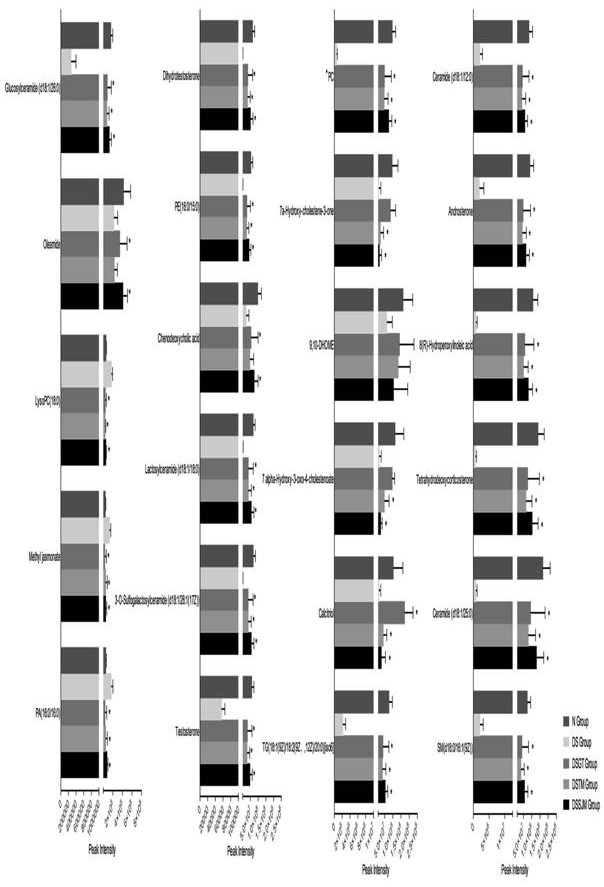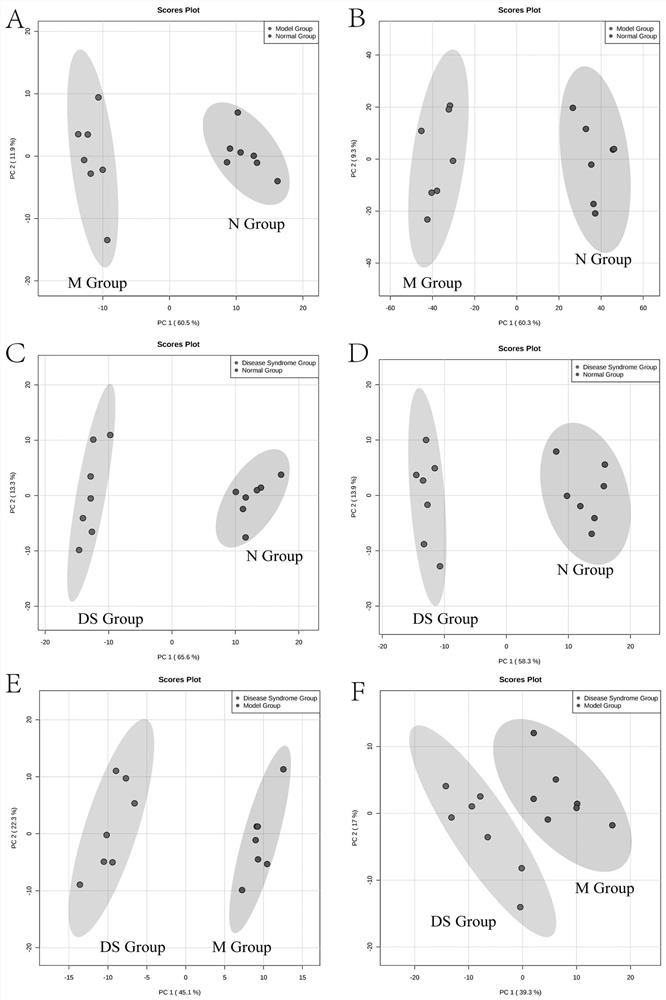A method for discriminating a rat model of hypertension with hyperactivity of liver-yang syndrome and its application
A technology for hypertension and hyperactivity of liver-yang, applied in the field of medicine, can solve the problems of lack of control group, inconsistency, and difficult to objective description of syndromes.
- Summary
- Abstract
- Description
- Claims
- Application Information
AI Technical Summary
Problems solved by technology
Method used
Image
Examples
Embodiment 1
[0039] Construction of Embodiment 1 Discrimination Method
[0040] 1. Experimental materials
[0041] (1) Experimental animals
[0042] 56 8-week-old male SHR rats (spontaneous hypertensive rats (SHR)) of SPF grade, weighing 186.35±8.15g, 7 male WKY rats of SPF grade 8 weeks old, weighing 190.15±6.37g, all purchased from Beijing Weiwei Tonglihua Experimental Animal Technology Co., Ltd. (SCXK (Beijing): 2012-0001). SHR was randomly divided into disease-syndrome group (DS Group), disease-syndrome Uncaria group (DSGT Group), disease-syndrome Gastrodia elata group (DSTM Group), disease-syndrome Shijuming group (DSSJM Group), model group (MGroup), and model hook group. Rattan group (MGT Group), model Gastrodia elata group (MTM Group), model Shicaia group (MSJM Group), and WKY as normal group (Normal Group, N Group). 7 in each group.
[0043] (2) Experimental drugs
[0044] The medicinal materials of Fuzi, Uncaria, Gastrodia elata, and Cassia chinensis were purchased from Bozho...
Embodiment 2
[0162]The verification of embodiment 2 discrimination method
[0163] In order to test the predictive ability of the constructed model for unknown samples, this study introduced 7 independent samples as the test set during the modeling, which were randomly selected samples from 1 disease syndrome group and 6 samples from drug intervention group, so that The objectivity of the predictive ability of the constructed model is guaranteed. see results Figure 10 , it can be seen that the model group and the syndrome group are clearly separated, indicating that the pathological conditions of SHR and hypertensive rats with hyperactivity of liver-yang syndrome are different. PLS Model R 2 Y is 99.0%, Q 2 It is 97.9%, indicating that the model has good predictive ability and high predictive accuracy. At the same time, it can be observed that one syndrome sample in the test set accurately falls in the syndrome group area, while the six drug intervention groups are separated from the ...
PUM
 Login to View More
Login to View More Abstract
Description
Claims
Application Information
 Login to View More
Login to View More - R&D Engineer
- R&D Manager
- IP Professional
- Industry Leading Data Capabilities
- Powerful AI technology
- Patent DNA Extraction
Browse by: Latest US Patents, China's latest patents, Technical Efficacy Thesaurus, Application Domain, Technology Topic, Popular Technical Reports.
© 2024 PatSnap. All rights reserved.Legal|Privacy policy|Modern Slavery Act Transparency Statement|Sitemap|About US| Contact US: help@patsnap.com










